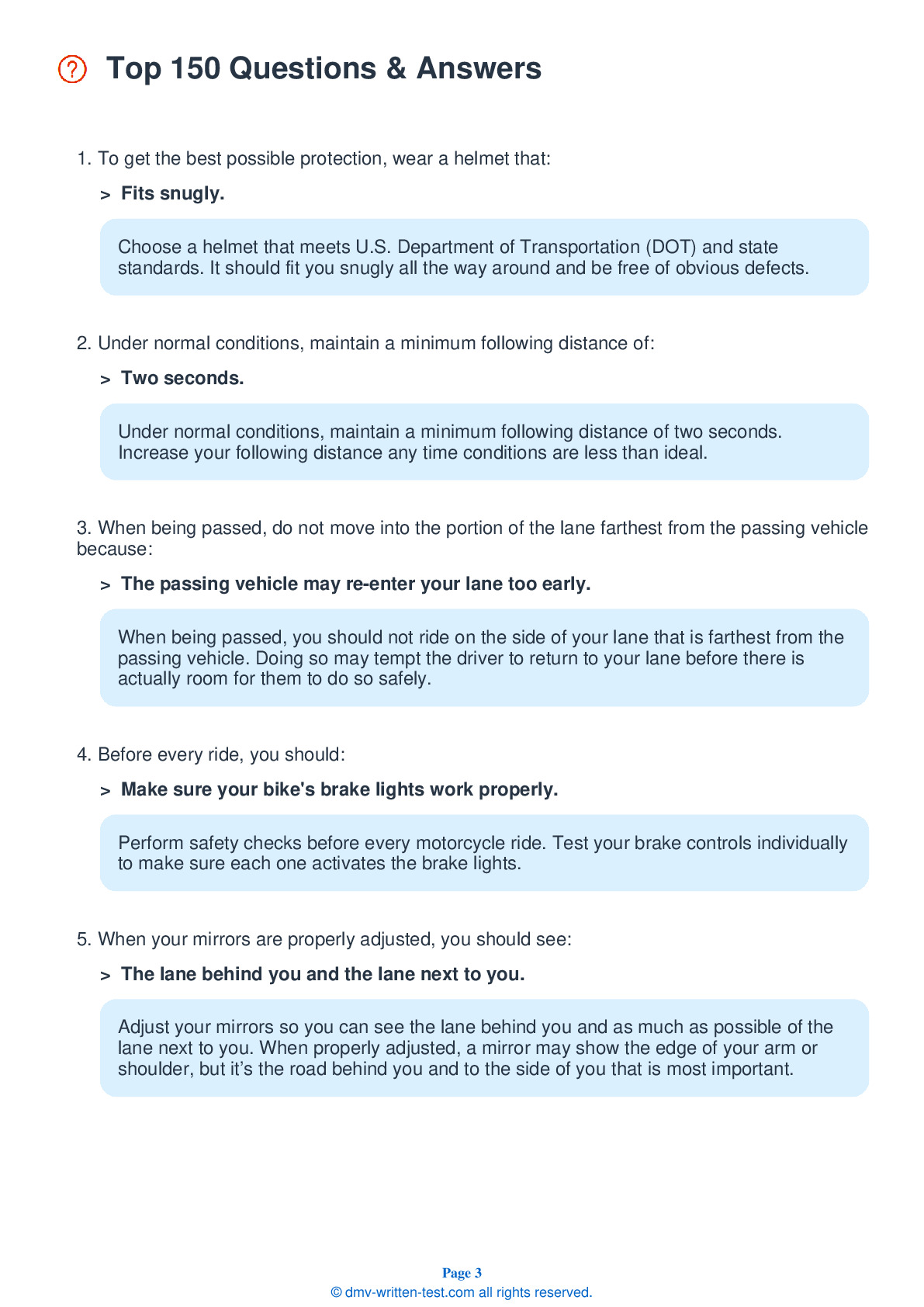2026 District Of Columbia Motorcycle Permit Test 7
The following questions are from real DMV written motorcycle permit tests. These are some of the actual permit questions you will face in District Of Columbia when getting your motorcycle learners permit. Each motorcycle theory practice test question has three answer choices. Select one answer for each question and select "grade this section." You can find this button at the bottom of the drivers license quiz. For a complete list of questions and answers for District Of Columbia please visit https://cheat-sheets.dmv-written-test.com/en/district-of-columbia/motorcycle.
Number of Tests
Number of Question
Passing Score
7. More than half of all crashes:
Explanation
Most motorcycle crashes involve riders with little experience on their motorcycle.
8. A skidding rear tire:
Explanation
A skidding rear tire is a dangerous condition that can result in a violent crash and serious injury or death. Too much rear brake pressure can cause the rear wheel to lock. As soon as the rear wheel locks, your ability to change direction is lost. To regain control, the brake must be released.
9. It is a good idea to wear reflective clothing:
Explanation
Wearing reflective and brightly-colored clothing is always a good idea when riding a motorcycle. Crashes occur in broad daylight and at night, so it is best to wear highly visible clothing at any time of day.
10. Convex mirrors make cars seem:
Explanation
Rounded, or convex, mirrors provide a wider view of the road than flat mirrors, but they also make objects seem farther away than they actually are.
11. When riding at night, you should do all of the following, except:
Explanation
To reduce the risk of a collision when riding at night, be sure to reduce your speed and increase your following distance. Use the headlights of vehicles ahead of you to see farther down the road. Use your high beam headlight, except when following or meeting another vehicle.
12. A motorcyclist is well-protected if they are wearing:
Explanation




